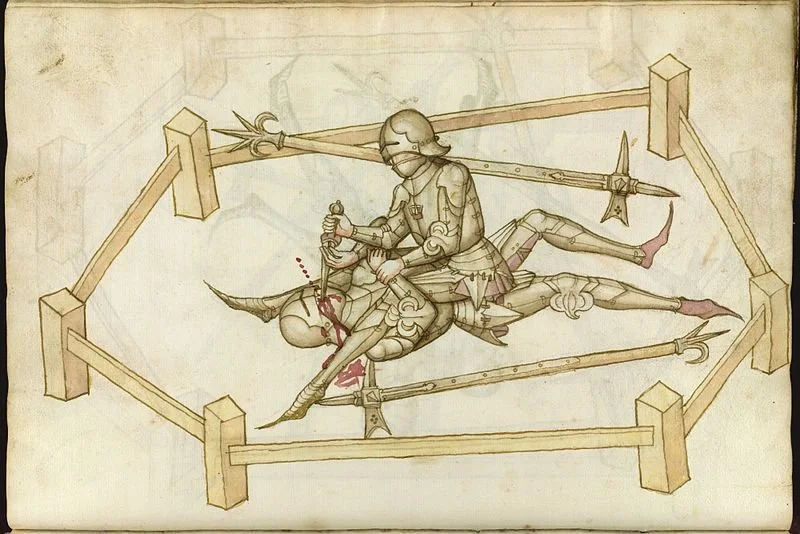HEMA (Historical European Martial Arts) is the modern movement to interpret and revive European fighting arts from various historical periods, dating primarily from the 13th-19th centuries.
By it’s nature, HEMA is a broad field of study yet is defined by its interpretation of existing historical fencing treatises. The earliest known surviving European fencing treatise dates from around the late 13th century, known as m.s. I.33 or the Walpurgis manuscript, it details a complex system of sword and buckler combat, interestingly enough depicting Priests engaging in combat training. European martial arts surely dated before this time, unfortunately, no known earlier manuscripts have been found, thus attempts to emulate earlier fighting systems remain purely speculative and are outside the realm of modern HEMA.
For many centuries, fencing masters left detailed treatises describing their fighting systems, especially throughout Western Europe during the 15th, 16th and 17th centuries. The sources dating from these periods form the core of most modern HEMA practice. These martial arts were largely lost and forgotten for centuries, yet thanks to the surviving manuals and through their meticulous study, reconstruction of these arts was possible.
After decades of extensive research, training and interpretative work, modern HEMA has come a long way in understanding and rediscovering the centuries old fighting arts of our ancestors. Laid out in these fencing treatises are very sophisticated and complex systems of combat, detailing an enormous array of weapons systems in varying contexts, from unarmored fencing with various weapons, in the context of a judicial duel/self defense/competition as well as fighting in armor with various weapons on foot and horseback. The scope of HEMA is quite large, and many clubs choose to focus on a particular master’s work, tradition or specific time period(s).
NSHF’s training focuses heavily on the Medieval and Renaissance era treatises detailing fencing with the longsword and rapier. additional we regularly explore those detailing the dussack/messer and even later period treastises in the use of the Military saber.
the Longsword from the “Kunst des Fechten” tradition of 14th century German master Johannes Liechtenauer forms the core of our training. This iconic weapon of the medeival knight was widely used throughout the late Middle Ages and early renaissance periods, used as both a battlefield weapon and for Duelling. Liechtenauer left for his disciples verses/Poems cryptically describing his fighting arts, to guard its secrets. His followers/later masters subsequently left their own treatises interpreting and describing his system of combat. for centuries these ‘arts’ were closely guarded, The Liechtenauer tradition flourished throughout the Holy Roman Empire/Germany and it’s lineage lasted into the 17th century.
A secondary focus for NSHF is the 17th-century Italian rapier, specifically the works of Salvatore Fabris and Nicolleto Giganti. The rapier evolved during the late 16th and early 17th centuries as an ideal dueling weapon, surpassing earlier systems and weapons as its use became widespread throughout Europe. Fencing treatises from this time became very elaborate and numerous, as fencing became no longer an occupation reserved for the nobility/knightly class.
As for later period hema sources, there are many. Periodically we delve into 19th century British Military Sabre, these sources span the period of the Napoleonic wars to WWI, effectively being the last sword in widespread use on the battlefield.
The sword is an unmistakable symbol in our culture, from ancient sagas to modern films - there is a distinct Power and respect that the sword commands in our collective imagination. the sword has never represented merely war and destruction but has for millennia been a powerful symbol, often embodying ideals of justice, Freedom, honor and virtue. Beyond just a fun and physical hobby, studying HEMA can be a way to connect with the past and those who came before us centuries ago, perhaps even a way to rekindle some spirit of a bygone age through self-development and dedication. HEMA is an exciting an rewarding pursuit; combining academic research & the study of historical documents with reviving an intensely physical martial art and combat sport, we like to think that we’re breathing life back into history, it’s an exciting thing to be part of and we hope you’ll join us!























